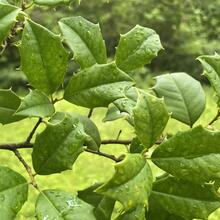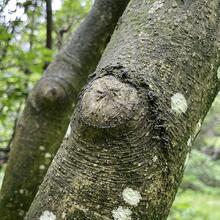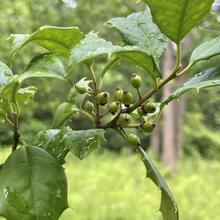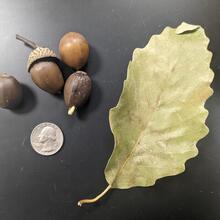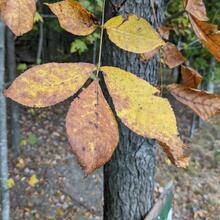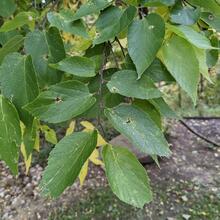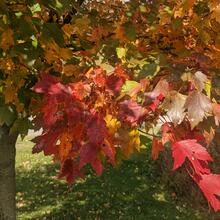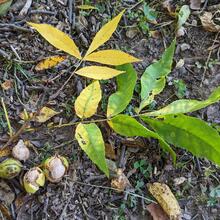Ilex opaca
Aquifoliaceae
More commonly growing in the Southern U.S. Must plant male and female plants to produce showy red fruits. Doesn't tolerate clay soils. Rarely damaged by deer browse.
Summary
 Climate Tolerance
Climate Tolerance
NA
Wildlife Benefits
Nectar/pollen source for bees, butterflies, moths; berries winter food source for birds, small mammals
Pollination Type
Pollinator
Plant Hardiness Zones
5 to 9
# Butterfly/Moths that use as host
39
Bloom Time
Spring (Mar-Jun)
 Shade/Sun Tolerance
Shade/Sun Tolerance
Full Sun to Shade: Receives less than 2 to 6 or more hours of direct sunlight
 Maximum Height
Maximum Height
Small (15-40 ft)
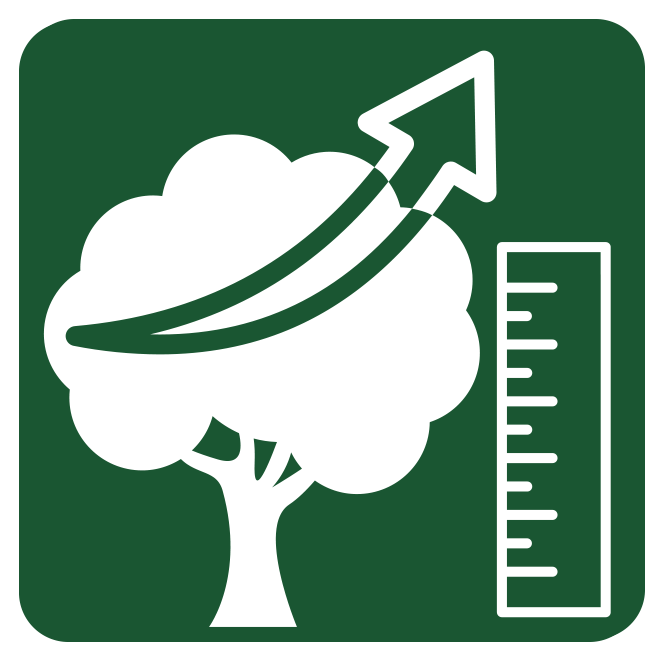 Growth Rate
Growth Rate
Slow: 1 ft or less per year
 Soil Type
Soil Type
Loam: Equal mix of clay, sand, and silt. Moderate moisture retention and high nutrient availability.
Sand: Large/coarse particles. Short moisture retention and low nutrient availability.
 Soil Moisture Tolerance
Soil Moisture Tolerance
Moist - Dry: Soil can be damp for periods of time and can retain little to no water for periods of time
Root - Fungal Association
Arbuscular mycorrhizae: Symbiotic relationship with fungi that exist on inside of plant root cells, facilitating nutrient uptake
Pest & Pathogen Risks
Low; Leaf miner
 Urban Stress Tolerance
Urban Stress Tolerance
Medium: Tree can adapt to a few urban conditions and will generally grow well
Drought Tolerance
Tolerant: Tree will not become stressed during periods of drought
Coefficient of Conservatism
0
Native Status
OH-Native: Species is native to Ohio
NatureServe G-rank
G5
Plant Community Type
- Beech Mixed: Absent
- Oak Mixed: Absent
- Alluvial: Absent
- Red Maple Mixed: Absent
- Ruderal: Absent
- Urban Tree Cover: Common
Bloom Color
Green
White
Form
Tree
Shrub
 Lifespan
Lifespan
Medium: 100-250 years
Soil pH
Acidic (pH<6.8)
Wetland Indicator Status
FACU: Facultative Upland, usually occurs in non-wetlands, but may occur in wetlands
Soil Compaction Tolerance
Tolerant: Tree will not become stressed from soil being compacted
Heat Tolerance
Sensitive: Tree will become stressed from increased temperature due to urban heat island effects
Salt Tolerant
Tolerant to Aerial Salt Spray: Tree will not become stressed when salt drift in the air
Native County Status
Cuyahoga
IUCN Red List Assessment
Least Concern
